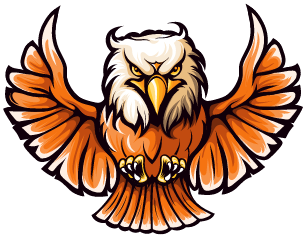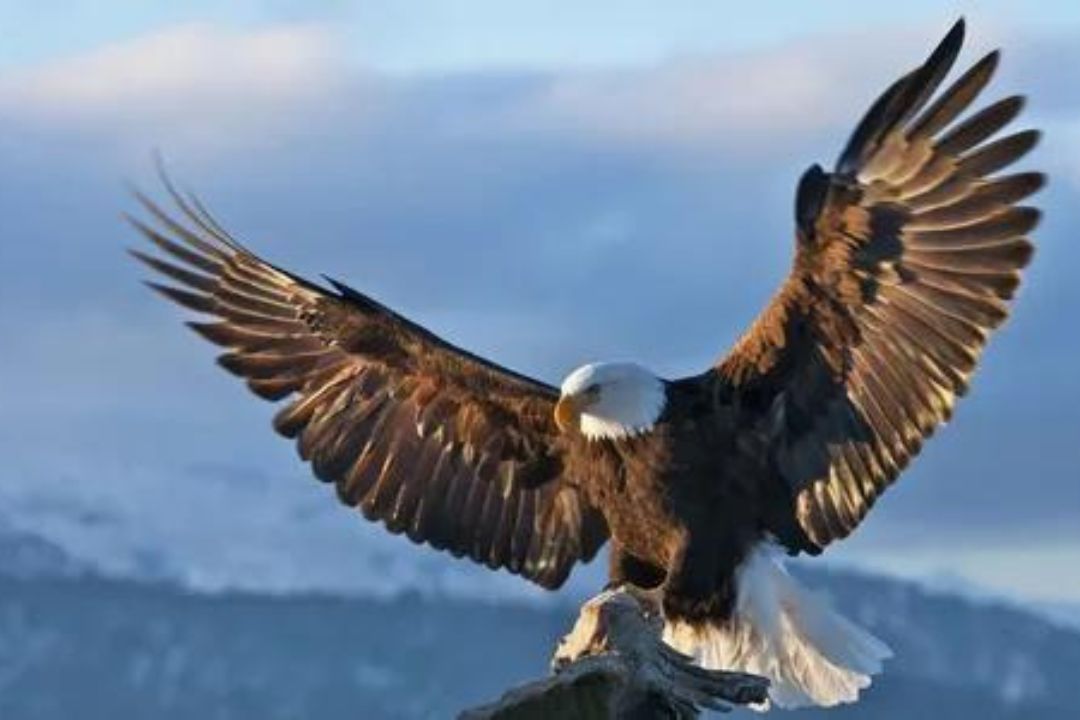The Majestic Bald Eagle: Symbol of Freedom and Power
Introduction
The Bald Eagle is something beyond a bird; it is a strong image of solidarity, opportunity, and perseverance. As the public bird and image of the US, it holds an extraordinary spot in American culture and history. This article dives into the life, qualities, and meaning of the Bald Eagle, offering a far reaching take a gander at why this superb raptor deserves such admiration and profound respect.
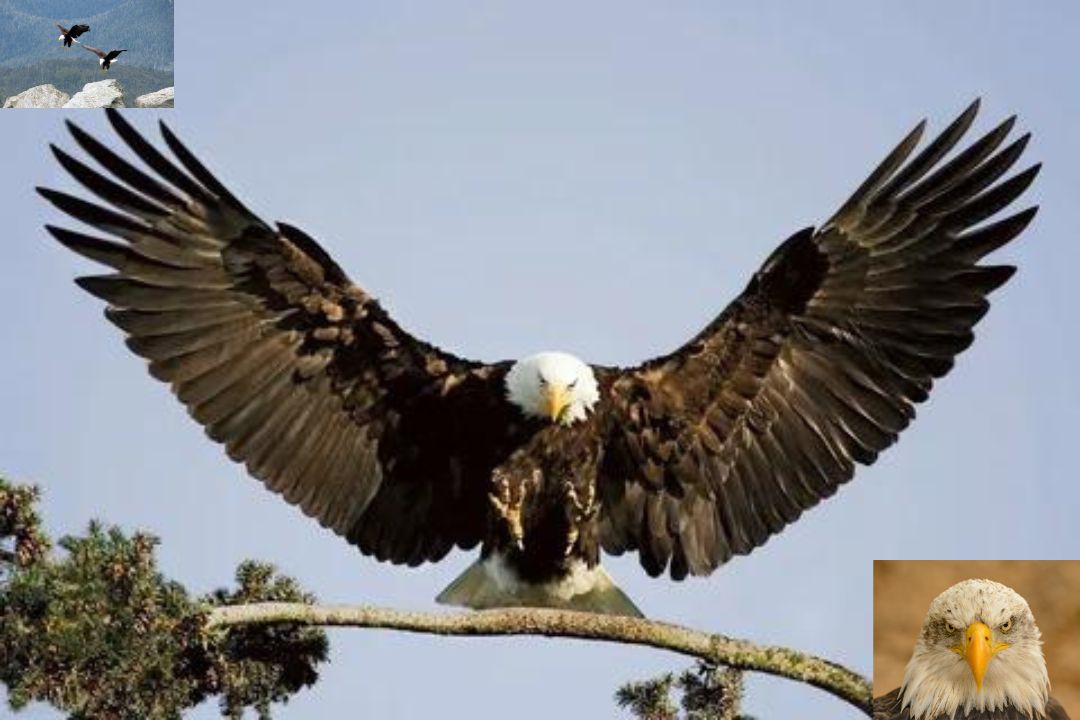
Overview of the Bald Eagle
The Bald Eagle (Haliaeetus leucocephalus) is an enormous flying predator tracked down essentially in North America. Unmistakable by its striking white head and tail feathers, combined with a strong yellow nose, this raptor is a genuine demonstration of nature’s greatness. Grown-up Bald Eagles have a wingspan that can arrive at up to 7.5 feet, making them one of the biggest flying predators in the mainland.
Physical Characteristics
The Bald Eagle’s particular appearance separates it from different raptors. Grown-up hawks have a dim earthy colored body with a differentiating white head and tail. Their bill and legs are dazzling yellow, while their enormous claws are adjusted for getting and holding prey. Youthful Bald Eagles, then again, have a mottled earthy colored appearance and don’t secure their grown-up plumage until they are around four to five years of age.
Habitat and Range
Bald Eagles favor environments near huge assortments of untamed water with plentiful food supply and enormous trees for settling. They are generally tracked down close to lakes, streams, and seaside locales all through North America. By and large, their reach was a lot more extensive, however protection endeavors have assisted with reestablishing their numbers and extend their territories.
Diet and Hunting
As dominant hunters, Bald Eagles have a different eating routine that basically comprises of fish, however they are likewise known to chase little warm blooded creatures, birds, and remains. Their sharp vision permits them to detect prey from significant stretches, and their strong claws are equipped for getting fish as extensive as 15 pounds. Bald Eagles are known for their noteworthy fishing abilities, frequently seen plunging from incredible levels to grab fish from the water.
Reproduction and Nesting
Bald Eagles are monogamous, frequently shaping long lasting pair bonds. Their settling conduct is striking; they construct enormous homes, known as aeries, high in trees or on bluffs. These homes can depend on 13 feet down and 8 feet wide, and are constantly added to throughout the long term, at times turning into the biggest homes of any bird. The female ordinarily lays one to three eggs, which the two guardians hatch for around 35 days. When incubated, the eaglets are really focused on by the two guardians until they are prepared to fledge.
Conservation Status
By the mid-twentieth hundred years, the Bald Eagle’s populace had fundamentally declined because of living space obliteration, hunting, and the impacts of DDT, a pesticide that caused eggshell diminishing. In any case, because of coordinated preservation endeavors, including the restricting of DDT and legitimate assurance, the Bald Eagle populace has bounced back. In 2007, it was eliminated from the Imperiled Species list, despite the fact that it stays safeguarded under the Uncovered and Brilliant Falcon Assurance Act and the Transient Bird Settlement Act.
Cultural Significance
The Bald Eagle holds significant representative importance, especially in the US. Picked as the public symbol in 1782 because of its great appearance and long life, it addresses opportunity and strength. Its picture is included on different government badge, coins, and tokens, supporting its status as an image of public pride.
Challenges and Threats
Notwithstanding its recuperation, the Bald Eagle faces continuous difficulties. Natural surroundings misfortune because of metropolitan turn of events, contamination, and environmental change keeps on undermining its current circumstance. Furthermore, human-natural life clashes, for example, lead harming from ingested spent ammo, present dangers to their wellbeing. Continuous preservation endeavors are critical to guaranteeing the proceeded with endurance of this notorious species.
How to Help
Supporting security affiliations and participating in domain recovery projects are strong techniques for adding to Bald Eagle shielding. Maintaining for environmental systems that defend regular life and reduce tainting can in like manner make a positive difference. Additionally, propelling care about the hardships looked by Bald Eagles can help with collecting support for continued with insurance tries.
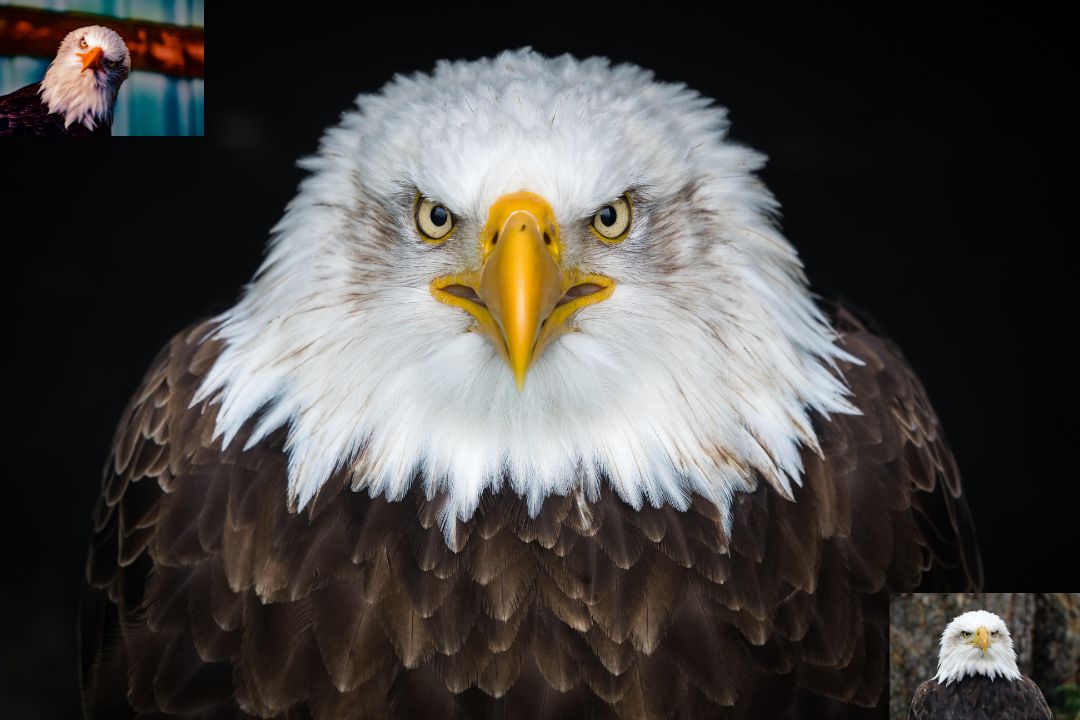
Overview of the Bald Eagle
The Bald Eagle (Haliaeetus leucocephalus) is an impressive flying predator local to North America. Known for its unmistakable white head and tail feathers, close by a strong yellow nose, the Bald Eagle deserves consideration and admiration. With a wingspan that can stretch out up to 7.5 feet, it is perhaps of the biggest raptor on the mainland, making its presence overhead a momentous sight.
Appearance
The grown-up Bald Eagle is effectively unmistakable because of its striking hue. The full grown bird includes a dull earthy colored body with a distinct white head and tail, while its bill and legs are a clear yellow. Youthful Bald Eagles, interestingly, have a more mottled earthy colored appearance, which continuously changes to the grown-up plumage north of quite a while. Their enormous, snared nose and strong claws are fundamental variations for their ruthless way of life.
Size and Wingspan
One of the most prominent actual traits of the Bald Eagle is its noteworthy wingspan, which can go from 6.5 to 7.5 feet. This sweeping wingspan, joined with areas of strength for them, fabricate, permits them to take off easily and explore through different conditions. Their size and strength are key variables in their job as dominant hunters in their environments.
Preferred Environments
Bald Eagles flourish in living spaces that offer adequate food and reasonable settling locales. They are ordinarily tracked down close to huge collections of untamed water, like lakes, streams, and seaside regions, which give a consistent stockpile of fish and other prey. Tall trees or high bluffs are liked for settling, as these raised locales offer security and an essential vantage point for spotting expected dangers and prey.
Geographic Distribution
By and large, the Bald Eagle’s reach stretched out across a lot of North America. Today, their conveyance is more packed in regions with plentiful water assets. In the US, they are regularly found in the lower 48 states, with huge populaces in The Frozen North, the Pacific Northwest, and the Incomparable Lakes district. Their recuperation and extension are demonstrations of fruitful preservation endeavors.
Feeding Habits
The Bald Eagle is basically a fish-eater, depending vigorously on oceanic prey for food. Its eating routine incorporates an assortment of fish animal categories, like salmon, trout, and catfish. Be that as it may, Bald Eagles are sharp feeders and will likewise consume little warm blooded creatures, birds, and remains when fish is scant. Their sharp vision permits them to recognize prey from incredible levels, making them exceptionally powerful trackers.
Hunting Techniques
Bald Eagles utilize a few hunting methods to catch their prey. They frequently chase by taking off high over their living space, checking the water beneath for development. When they spot a possible feast, they jump at high velocities to grab the fish with their sharp claws. This amazing aeronautical hunting move shows their spryness and accuracy.
Nest Building
Bald Eagles are known for their great homes, which are among the biggest of any bird species. These homes, called aeries, are normally underlying tall trees or on bluffs, giving a protected and raised area for raising their young. A falcon’s home can compare 13 feet down and 8 feet wide, for certain homes being utilized and added to for a long time, making a significant design.
Breeding and Care
Bald Eagles are monogamous and frequently structure long lasting matches. During the rearing season, the two guardians take part in building the home and raising the youthful. The female lays one to three eggs, which are brooded for around 35 days. When incubated, the eaglets are taken care of and really focused on by the two guardians until they are prepared to fledge, or leave the home. The most common way of raising eaglets includes critical parental speculation, guaranteeing the youthful are good to go for autonomy.
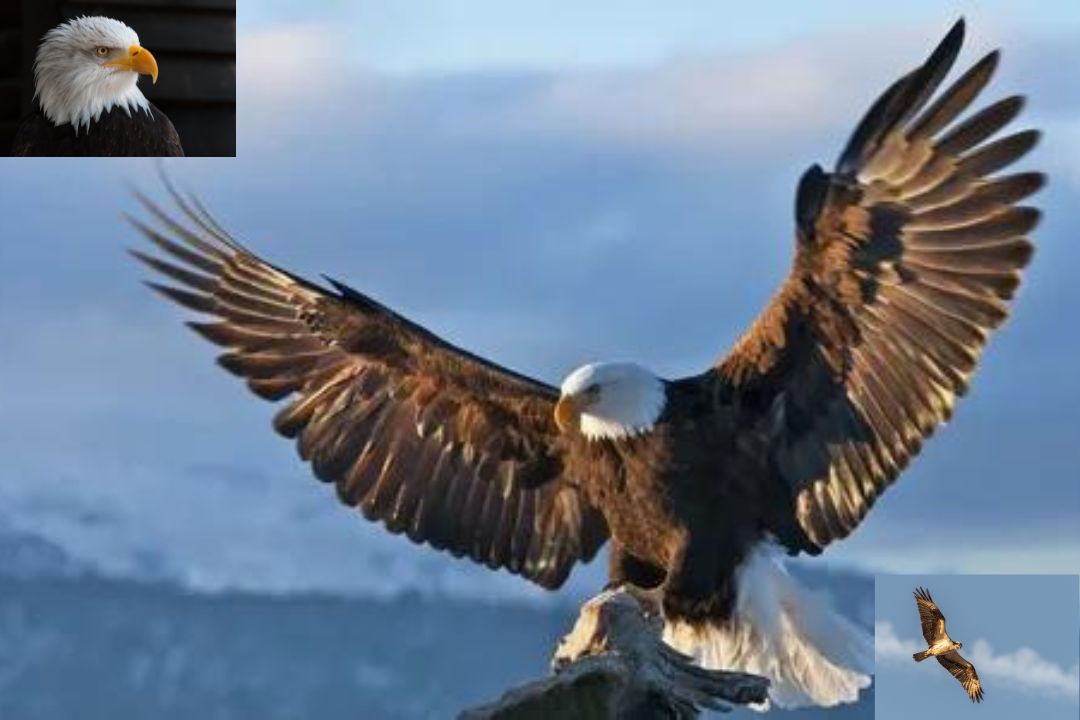
Historical Decline
The Bald Eagle populace confronted serious decays during the mid-twentieth 100 years because of different variables, including natural surroundings obliteration, hunting, and the far reaching utilization of DDT. This pesticide caused eggshell diminishing, prompting decreased conceptive achievement. By the 1960s, Bald Eagles were recorded as jeopardized, and their numbers had dwindled to disturbing levels.
Recovery Efforts
Purposeful protection endeavors play had a vital impact in the Bald Eagle’s recuperation. The forbidding of DDT during the 1970s, joined with lawful securities and territory reclamation drives, has prompted a wonderful bounce back in their populace. By 2007, the Bald Eagle was delisted from the Imperiled Species list, however it stays safeguarded under different government regulations.
Symbolism
The Bald Eagle holds an exceptional spot in American culture and history. Picked as the public seal in 1782, it addresses opportunity, strength, and versatility. Its picture shows up on the Incomparable Mark of the US and various authority images, supporting its job as a public symbol.
Historical Context
The choice to embrace the Bald Eagle as the public bird was impacted by its grand appearance and seen characteristics. Dissimilar to different birds that were thought of, the Bald Eagle’s credits — like its amazing size and strong presence — lined up with the qualities and goals of the juvenile country. Its imagery perseveres, making it an enduring seal of American pride.
Ongoing Risks
Notwithstanding its recuperation, the Bald Eagle keeps on confronting a few dangers. Natural surroundings misfortune because of metropolitan turn of events and environmental change presents critical dangers to their endurance. Furthermore, lead harming from ingesting spent ammo stays a serious concern. Endeavors to address these difficulties are progressing, as proceeded with cautiousness is important to guarantee the Bald Eagle’s drawn out endurance.
Human-Wildlife Conflicts
Human exercises, like fishing and sailing, can unintentionally affect Bald Eagles. Unsettling influences from these exercises can slow down settling and taking care of ways of behaving, possibly prompting diminished regenerative achievement. Instructing general society about how to limit these effects is a significant part of protection endeavors.
Support Conservation Efforts
People can add to Bald Eagle protection by supporting associations devoted to untamed life safeguarding. Gifts, chipping in, and partaking in territory reclamation projects are compelling ways of making a difference. Support for ecological arrangements that safeguard natural life and diminish contamination is likewise critical.
Raising Awareness
Expanding public mindfulness about the Bald Eagle’s preservation needs can encourage more prominent help for defensive measures. Instructive projects, local area effort, and natural life observing drives assume a crucial part in advancing the protection of this famous species.
Behavior Patterns
Bald Eagles are known for their great and fluctuated ways of behaving. They are singular trackers, frequently seen taking off high over their region, filtering for prey. While not hunting or settling, they should be visible participating in perky aeronautical presentations. These showcases, which incorporate sensational flight moves and claw fastening, are accepted to be important for their romance customs and social holding.
Social Structure
Albeit for the most part single external the rearing season, Bald Eagles areas of strength for display bonds inside their settling matches. These bonds are urgent for fruitful rearing and raising of eaglets. Outside the settling season, Bald Eagles might gather in enormous numbers around plentiful food sources, for example, during salmon runs, displaying their versatility and social adaptability.
Ecological Role
Apex Predator
As dominant hunters, Bald Eagles assume a basic part in keeping up with the strength of their biological systems. By going after fish and different creatures, they assist with controlling populaces and guarantee the equilibrium of their territory. Their hunting exercises additionally assist with dealing with the populaces of species that could somehow or another become overabundant, exhibiting their significance in biological frameworks.
Indicator Species
Bald Eagles act as marker species, meaning their wellbeing and populace patterns can give important bits of knowledge into the general state of their current circumstance. Changes in their numbers or wellbeing can flag shifts in the environment, for example, contamination levels or living space debasement, provoking important protection activities.
Iconic Individuals
From the beginning of time, a few Bald Eagles have acquired notoriety for their novel stories and commitments to protection. One striking model is Challenger, a Bald Eagle prepared by the American Falcon Establishment. Challenger has turned into an image of preservation endeavors, taking part in instructive projects and bringing issues to light about the species’ necessities and securities.
Cultural References
The Bald Eagle has additionally been highlighted noticeably in different types of media and culture. From showing up on the Incomparable Mark of the US to being the subject of various narratives and books, its picture has become inseparable from American goals and regular loftiness.
How to Observe Bald Eagles
Best Viewing Practices
For those keen on noticing Bald Eagles right at home, certain practices can improve the experience while limiting aggravation. Visiting laid out untamed life stores or public parks during the suitable seasons is great, as these areas frequently have assigned review regions and proficient aides. Keeping a conscious separation and utilizing optics or zooming focal points can give a more critical look without disturbing their exercises.
Responsible Wildlife Observation
While noticing Bald Eagles, it’s significant to comply to rules that safeguard their prosperity. Abstain from moving toward homes or upsetting their taking care of regions, as this can cause pressure and disturb their regular ways of behaving. Supporting and following nearby natural life guidelines guarantees that Bald Eagles and their territories are saved for people in the future.
Continued Conservation Efforts
Looking forward, the fate of Bald Eagles relies upon progressing preservation endeavors and public mindfulness. Proceeded with natural surroundings insurance, contamination control, and exploration are indispensable to supporting their populaces. Cooperative endeavors between government offices, protection associations, and nearby networks assume a key part in tending to the difficulties looked by Bald Eagles and guaranteeing their proceeded with progress.
Education and Advocacy
Teaching the general population about the significance of Bald Eagles and the job they play in biological systems is vital for cultivating a culture of preservation. Support for ecological approaches that address environmental change, contamination, and natural surroundings annihilation will add to the drawn out insurance of this notorious species.
Representation in Media
The Bald Eagle’s greatness stretches out past its regular natural surroundings and into mainstream society. It has been highlighted unmistakably in movies, narratives, and books, frequently representing opportunity, strength, and boldness. For example, the notorious symbolism of the Bald Eagle in enthusiastic movies and public promotions highlights its job as an image of American pride.
Artistic Depictions
Specialists and artists have for some time been motivated by the Bald Eagle’s striking appearance and superb way of behaving. Its picture is in many cases utilized in canvases, figures, and different types of workmanship to convey subjects of force and respectability. The hawk’s presence in craftsmanship supports its status as a venerated and strong token.
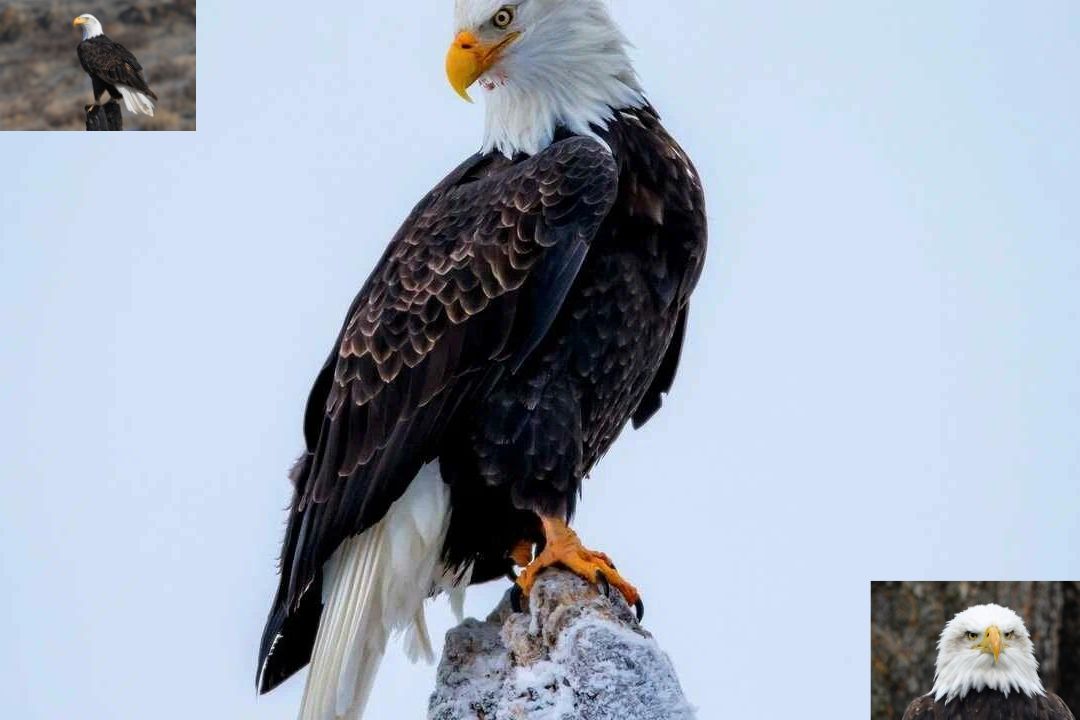
Conclusion
The Bald Eagle remains as an eminent demonstration of the force of nature and the flexibility of untamed life. Its excursion from the verge of termination to an image of public pride features the progress of preservation endeavors and the continuous need to secure and save our normal world. By grasping its way of behaving, environmental job, and the difficulties it faces, we can more readily appreciate and add to the conservation of this magnificent bird. As an image of opportunity and strength, the Bald Eagle moves us to proceed with our endeavors to protect the climate and guarantee that people in the future can proceed to respect and commend this mind boggling species.
